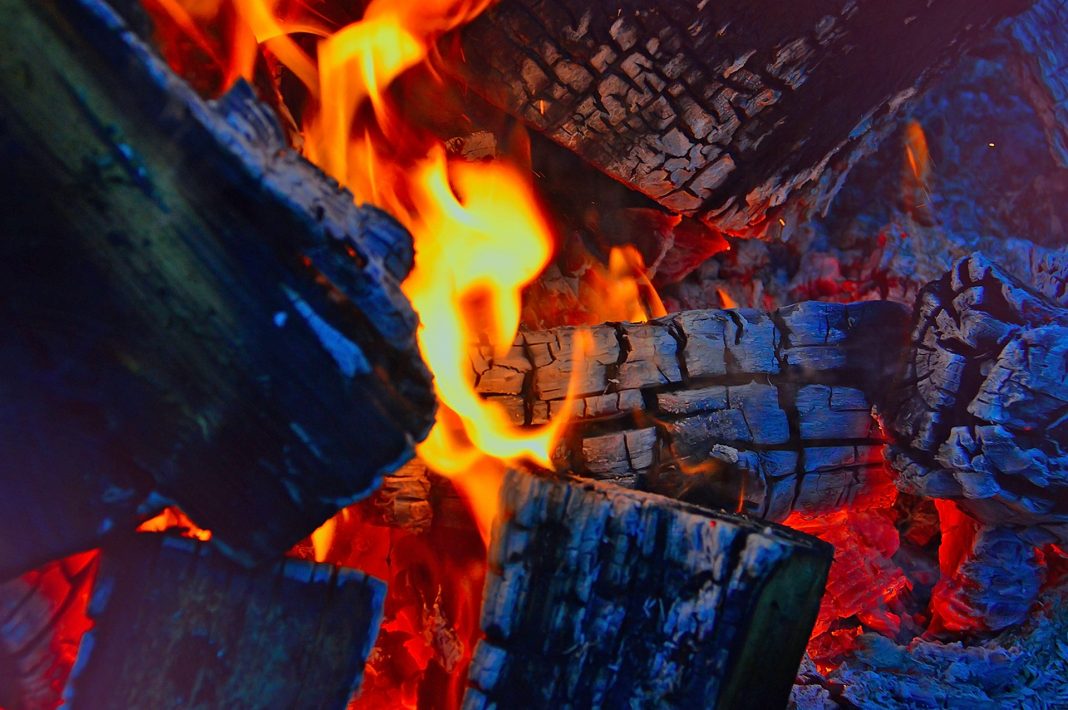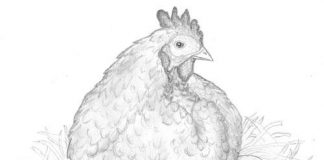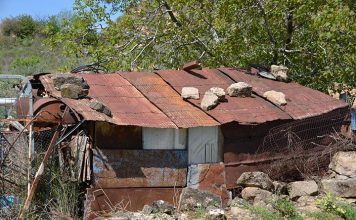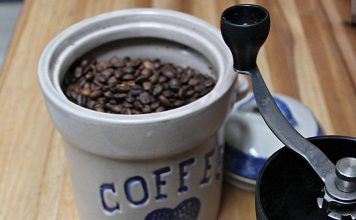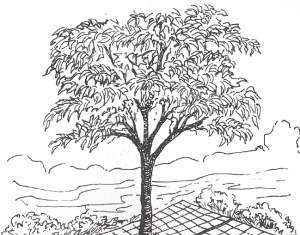| Issue #78 • November/December, 2002 |
I had a problem. Other men love football, baseball, basketball, or golf. I love to hunt. And the animal I love to hunt more than any other is the Rocky Mountain Elk. Besides the majestic beauty of the elk themselves, I love the country they live in. I love the panoramic views, the crystal clear air, the glorious smell of the surrounding spruce trees, the golden beauty of the aspens. So, what was my problem?
I was thinking of giving up elk hunting. Temperatures in the Colorado Rockies during October frequently drop to well below freezing. The frigid nights would find me awakening frequently to nurse some semi-frozen body part. I would get up in the morning, exhausted, and stumble around the mountains all day, half asleep.
|
If I was going to keep going to Colorado each fall, I needed a wood stove for my hunting tent. More than that, there were certain characteristics that my stove had to have. It had to be lightweight. It had to be able to hold a fire overnight. It had to be big enough that I wouldn’t have to get up at night to stoke it. It would be nice if I could also cook on it. And it had to be cheap. With pre-made stoves selling for up to $400, I knew I would have to make my own.
Turning it over in my head for a week or so, I came up with a plan. A few days later, I had an attractive stove that could not only heat my big 16′ x 16′ hunting tent, but would be right at home in anybody’s tool shed, workshop, or vacation cabin. In addition, it had a relatively flat cook surface on which I could brew up my morning batch of coffee, bacon, eggs, and home fries.
Did I mention that I built it with no welding, using only a jigsaw, power drill, screwdriver, file (although, in many places, a grinder would have made the job faster and easier), ball-peen hammer, and a pair of pliers, for a total cash outlay of only about $30? And you can do the same.
I decided that a barrel stove was my best option, but not the kind that you can buy kits for, as these kits utilize the barrel in a horizontal position. I wanted a vertical stove to minimize the floor space taken up in my tent as well as to give me a flat surface for cooking.
Getting started
|
To make my stove, I bought a steel barrel with a removable topthe kind of lid that is clamped on by a lever lock. In our area these barrels sell for $5 to $10. Note: It is important that the top rim of the open barrel and the two raised bands around the middle of the barrel are of the same diameter. This is easy enough to check; just remove the lid and hold a straight edge (I used a 2″ x 4″) so that it lies across both bands and the rim. If the straight edge contacts all three points, you’re OK.
Be sure you clean your barrel out before you start cutting. My barrel had once contained (and still held about 2 gallons of) the most delicious smelling fudge ice-cream topping imaginable. In my case, I didn’t want to make a mess in my machine shed. In your case, your barrel may have contained flammable materials. The cutting process or the initial firing could cause such a barrel to explode. Don’t take chances; clean it out.
To begin making my stove, I first took the lid and lever lock off the barrel, then removed and discarded the foam rubber gasket from under the lid.
Next, using a drill with a 3/8-inch metal cutting bit, I drilled a hole just above the upper of the two bands. A metal-cutting blade in my jig saw made short work of cutting around the barrel about halfway from the high part of the band to the “flat” of the barrel. I quick-checked to see if my lid and lever lock were going to fit back on the barrel. They did.
|
This left me with the 2/3 (bottom) section of barrel that would be the main part (body) of the stove, and the top 1/3 that would be my material source for the door and draft.
Except for the above, all the cuts I made in my stove were made by first drawing the lines to follow with the jigsaw. Then I drilled a “pilot” hole on the scrap side of the mark, which I enlarged with a 3/8-inch bit. These holes were drilled at each corner where holes or parts had to be square. This allowed access to the jigsaw blade. Square openings were drilled at each corner. Edges of all holes and cut-out components were filed smooth where burrs would be dangerous or impair use.
I used a flexible straight edge to mark a rectangular door opening 9 inches high by 12 inches wide on the upper section of the stove body, centered top to bottom between the rings. Then I cut it out using the jigsaw.
Beneath the door opening, on the lower section of the stove body, I marked and cut another rectangular hole. This hole would be the draft opening and was 2 inches high by 4 inches wide. The bottom of this hole was 2 inches up from the bottom ring of the barrel.
|
I then moved to the top 1/3 of the original barrelmy material source. From this I cut my stove door, draft door bracket, and draft door. The stove door is 10 inches high by 13 inches wide. The draft door bracket is 4 inches high by 10 inches wide with a 2 inch high by 5 inch wide hole cut out. This hole should be cut out 1 inch from the left side of the bracket, 1 inch from the top and bottom, and 4 inches from the right side of it. Be sure you cut the hole out first, before cutting the bracket out, as it would be much more difficult and dangerous to try to do it afterward. The draft door itself is 2¾ inches high by 5 inches wide with a tab extending from the left side 1¾ inches high by 2 inches wide. All edges were then filed and the tab on the draft door was bent outward, with the very end of it being curled back on itself to make a more convenient grip.
I drilled 3/16-inch holes (this is the size I drilled all screw holes) 1½ inches apart, ¼ inch from the top and bottom edges of the draft door bracket. This gave me 7 holes evenly spaced along the top edge, and another 7 along the bottom edge. In addition, I drilled another screw hole centered top to bottom on the left side of the bracket. Then I centered the bracket over the draft hole in the stove. Note: since the hole in the stove is 4 inches wide and the hole in the bracket is 5 inches wide, be sure there is ½ inch of the bracket hole on each side of the stove hole. Holding the bracket in place, I marked where the corresponding screw holes needed to go on the stove. Then I drilled the holes where marked.
To install the draft door and bracket I put a screw through each hole, one at a time, placed three flat washers (If your washers are thicker than mine, you may only need two) on each screw as spacers, then pushed the screw through the stove body where I put on a flat and a lock washer, then a nut. Be sure you do not tighten any of these nuts down until they are all in place. When you do tighten them, be careful that you do not trap the draft door; it must be able to slide back and forth.
On the right edge of the big stove door I made two marks, one about 2½ inches down from the top and another the same distance up from the bottom. I centered my hinges on these and marked where the screw holes should go. On the left edge I made a mark halfway down, then centered the window lock on it and marked the screw holes.
|
After drilling the screw holes in the door, I attached the hinges and latch in their appropriate places using screws, flat washers, lock washers, and nuts. I then held the door up on the stove and marked the corresponding holes for the hinges on the stove body, drilled them, and attached the door. You may find that you have to do some trimming with the jigsaw or a pair of tin snips on your door opening so that the screws holding the hinges and latch on the door don’t hang up on the stove body. Attaching the door made placing the catch for the door latch easy. I just held the door closed in such a way as to form a tight seal with the stove, then placed the catch in the proper place. I marked the holes, but, instead of drilling them where marked, I drilled slightly (about 1/16 inch) away from the door. This way, the door would be held more tightly closed, negating the need to use a door gasket.
Placing the lid of the barrel on a flat surface, I used the crimped end of a section of stovepipe as a template to draw a circle on the lid where I wanted the pipe hole to be. This hole must be entirely on the flat part of the lid, at least ¼ inch from any raised ring your lid may have on it. I chose to use the stovepipe crimped end down for two reasons. First, any creosote that might build up in the pipe when the stove was burning “cool” would drip into the stove and be consumed when the stove was burning “hot.” Second, this would eliminate the need for a stovepipe collar to be made and attached to the stove top.
Next I drew a second circle, about five inches in diameter, centered inside what would be my stovepipe hole. I then used the jigsaw to cut around the inner circle. Then I made cuts radiating out from the inner circle just to the outer circle, about every ¼-inch. This formed a ring of tabs that I then bent downward, using my pliers, and flattened against the inside of the lid. I did a test-fit with the stovepipe and used the hammer to gently make any adjustments to the opening so that the pipe fit inside it smoothly and snugly.
|
I assembled the stove and did a test burn to see if the stove was working properly and to burn off as much of the original paint from the stove as I could. You may notice, in some of the pictures that accompany this article, that my stove originally had a 4-inch pipe. During the test burn I found that the stove did not draw properly with that small diameter pipe. The 6-inch pipe works much better.
Once the stove had cooled down from the test burn, I cleaned the rim of the lid and used stove cement to attach an appropriate length of stove gasket in the original gasket’s place. I then clamped the lid to the stove body and allowed the cement to harden overnight. Since the rim of the stove body was somewhat uneven, I marked the lid and the body so that the lid could always be aligned in exactly the same way, thus minimizing gaps that could leak.
Then began the painting process. I chose to paint my stove because, to me, paint has a more pleasing appearance than stove polish. In the future, I may go over the stove with stove polish as my original paint peels off. Stove polish is more resistant to heat than paint and gives a more durable finish. You may choose to use polish in the first place. If, like me, you want to try paint, ask your hardware person for stove paint or barbecue grill paint. Paints designed for automobile engines are not resistant to high enough temperatures to be used on a wood burning stove. Follow the instructions on the can to prepare the stove and apply the paint.
The test fire
After giving the paint sufficient time to cure, I placed the stove on its stand and put the stove pipe (with a six inch damper installed) in place. Time for another test fire.
|
Be sure you do your test fire outside, in an open area, as the paint will smoke quite a bit the first time it gets hot. Wear fireplace or welding gloves to reduce your chances of getting burned. As your stove heats up, try working the draft. You may find that it sticks in a place or two. Use a flat tipped screw driver or similar tool to gently adjust the steel draft door bracket (not the door itself) so that the draft door moves fairly easily.
With a little experimenting, I soon found how to maximize the burning of my stove. By manipulating the draft and the damper, I learned how to make the fire burn hotter, cooler, longer, etc. You should be able to do the same.
My $30 stove may not make me a better hunter, but at least now I will be able to sleep better, eat better, and just feel better in general while I am out hunting. That, in turn, might help me to better enjoy my time in the mountains and feel like spending more time out in them. As I said, my $30 stove may not make me a better hunter…but then again, it might.
|
While the paint on the stove was curing, I made a stand to keep the stove off the ground. I made mine by cutting off a 70-inch length from the bottom of a cattle panel and bending it into a circle. This was plenty big enough to support the stove safely, yet small enough to fit within the bottom ring of the stove. You could probably find an old automobile tire rim that would make a sturdy stand if you plan to use your stove inside a building. I painted my stand black to match the stove.
The stove will burn well as is, but I thought it might be made more efficient with the addition of a grate. That way air coming in the draft hole could spread out and feed the whole fire from underneath and the build up of ashes during burning would not prevent complete combustion of the wood. I made this similarly to the way I made the stand only using the bottom section of a hog panel and forming a ring approximately 2/3 the diameter of the stove. Then I used the top section of the original barrel (the part I had used for materials) as a template on a piece of expanded steel from my scrap pile. I scribed a line on the expanded steel, then cut out the circle using my jigsaw. When I put the ring inside the stove and placed the expanded steel on top of it, I had a stove grate that worked perfectly.
While the relatively flat stove top would work pretty well for frying, I wanted to make it even more versatile. By cutting a 20-inch by 11-inch piece of expanded steel and bending 3 inches of each end downward (leaving a 14 inch by 11 inch flat surface), I had a stovetop trivet. This I could place on the stove top where it would hold a Dutch oven in which I could prepare biscuits, chili, stews, etc. You could use a couple of dry building bricks in much the same way.
Parts list:
|
I just got back from Colorado. The stove got a good workout during our hunting trip, and I thought you might like to know that it passed the test with flying colors. The first night in camp we got five inches of snow but stayed snug and warm thanks to “Black Elk,” as someone in camp dubbed it. The second day, I threw together a pot of venison chili that simmered on the stove all day and was a hit with all who tasted it that evening. Every morning, the coffee brewed on Black Elk helped get the day off to a good start. The stove held fire all night or all day when needed. After a day spent slogging down muddy trails, we placed our sodded boots near the stove at night and found them warm and dry the next morning. Many of the other hunters in camp found their way to our tent just to see “that stove I heard about,” although I noticed they only showed up when it was particularly cold outside and spent more time enjoying the warmth than looking at the stove.


